In the diverse spectrum of soil types, calcareous soils are distinguished by their remarkable calcium carbonate ($CaCO_3$) content. This fundamental characteristic significantly influences their physical and chemical properties, presenting both opportunities and challenges for agriculture. From their characteristic whitish color to their tendency towards alkalinity, understanding the peculiarities of calcareous soils is crucial for successful agricultural management in these areas. In this article, we will explore in depth what calcareous soils are, how they form, their effects on agriculture, and strategies to optimize their use.
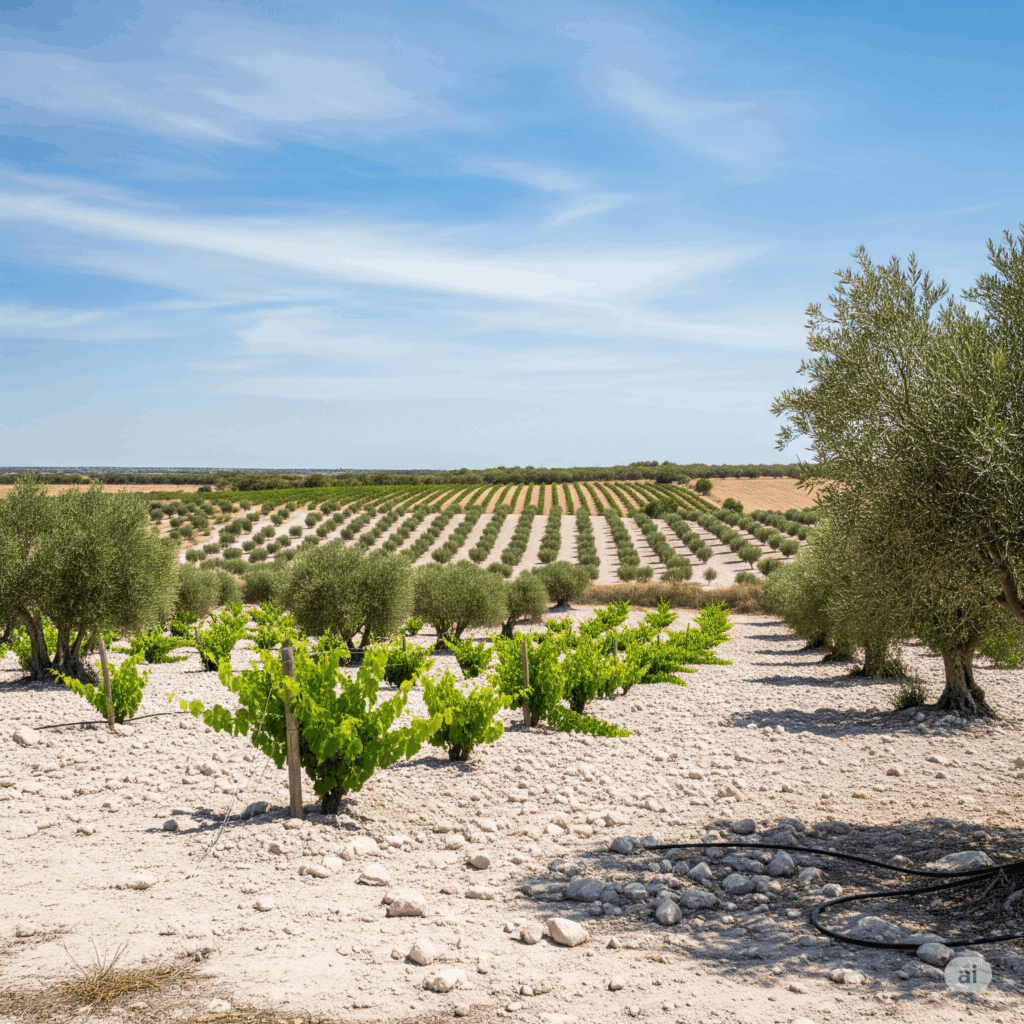
What are Calcareous Soils?
A calcareous soil is defined by the significant presence of calcium carbonate. The $CaCO_3$ content can vary widely, from moderate percentages to very high levels. This abundance of calcium carbonate is what imparts many of their distinctive properties to these soils, including their light, often whitish or grayish color, and their alkaline pH reaction.
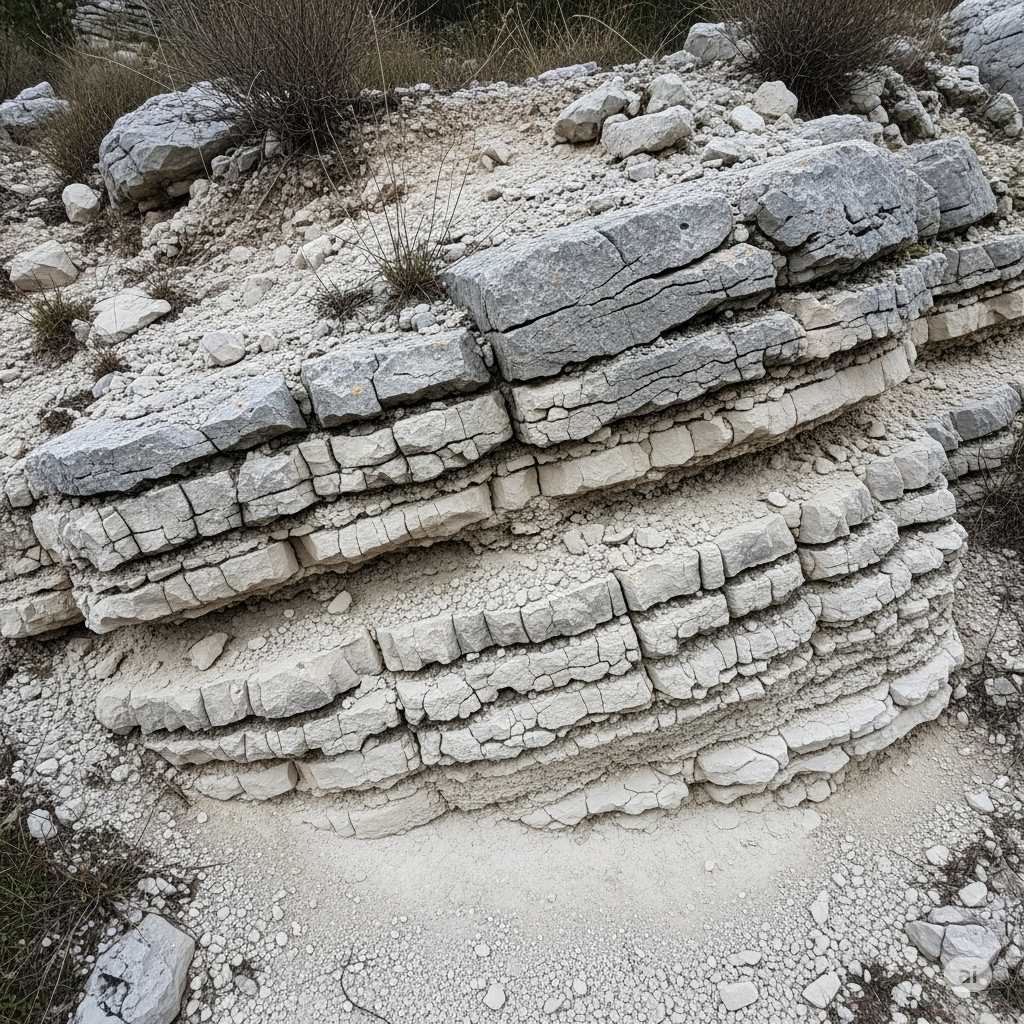
How Do Calcareous Soils Form?
The formation of calcareous soils is closely linked to the presence of parent materials rich in calcium carbonate:
- Weathering of limestone and marl: The decomposition of sedimentary rocks like limestone and marl, primarily composed of calcium carbonate, is a main source of this mineral in the soil.
- Accumulation through geological processes: In some regions, the deposition of calcium carbonate-rich sediments, whether by wind or fluvial action, contributes to the formation of calcareous soils.
- Low precipitation: In arid and semi-arid climates, where leaching is limited, calcium carbonate tends to accumulate in the soil profile.

Impacts on Agriculture: Opportunities and Challenges
Calcareous soils present a series of characteristics that influence their suitability for agriculture:
- Alkaline pH: The high calcium carbonate content generally results in an alkaline pH (above 7.5). This can affect the availability of certain essential nutrients for plants, such as iron, manganese, zinc, and phosphorus.
- Good aeration and drainage: Due to the presence of calcium carbonate particles, these soils often have a good structure, which facilitates aeration and drainage. However, in some cases, they can be stony and shallow.
- Low availability of some micronutrients: Alkaline pH can reduce the solubility and, therefore, the availability of micronutrients like iron (causing iron chlorosis), manganese, and zinc.
- Phosphorus fixation: The high amounts of calcium present can react with phosphorus, forming insoluble compounds that reduce its availability to plants.
- Erosion resistance: The presence of calcium carbonate can contribute to soil aggregation, making it less susceptible to erosion compared to other soil types.
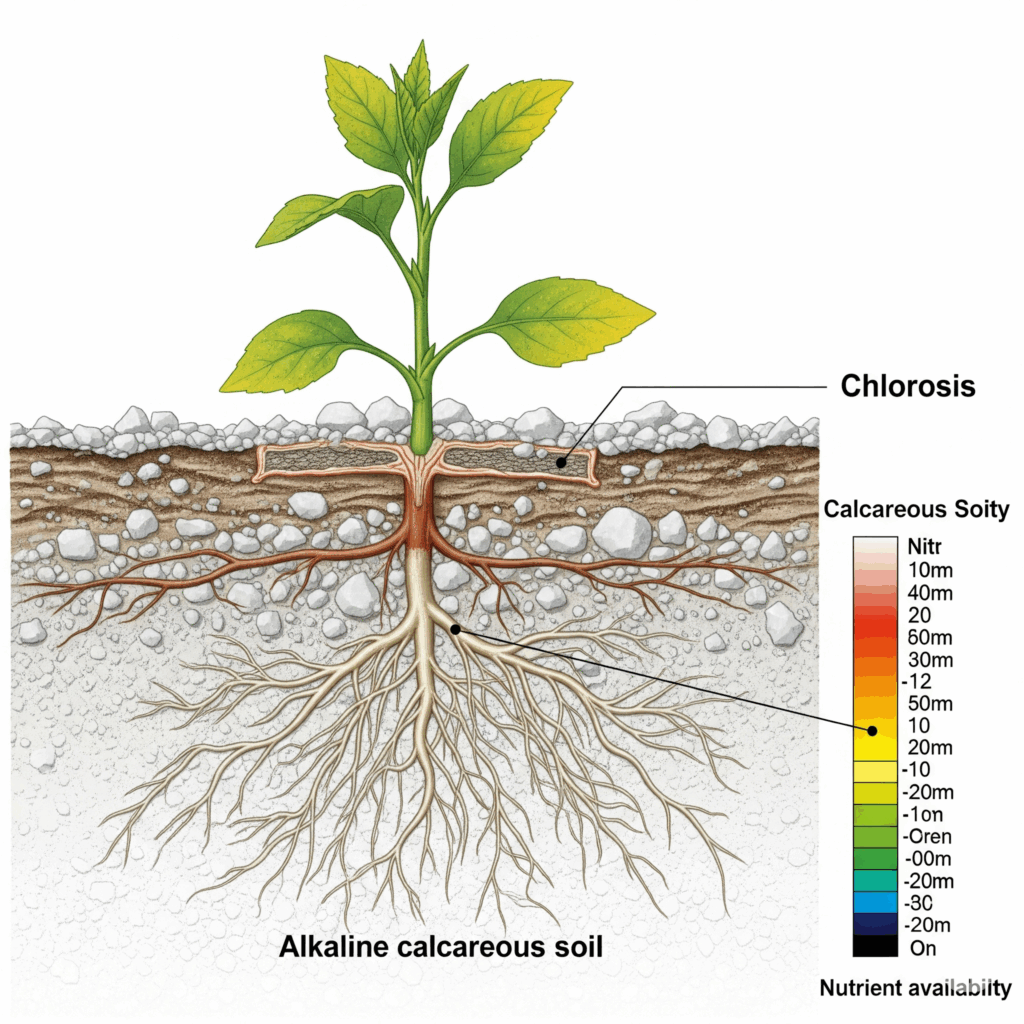
Despite these challenges, many crops thrive in calcareous soils if proper management practices are implemented.
Managing Calcareous Soils in Agriculture
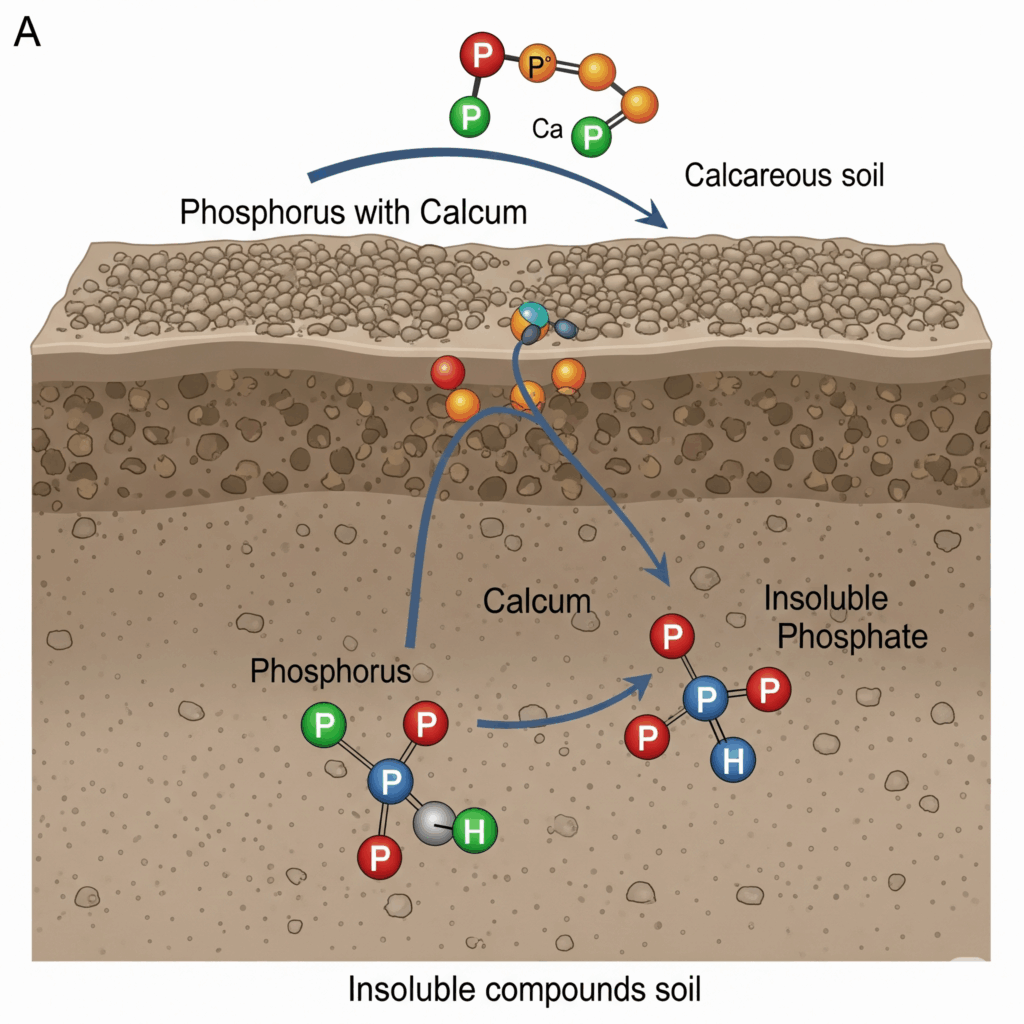
Successful management of calcareous soils focuses on mitigating the effects of alkaline pH and ensuring adequate plant nutrition:
Selection of Adapted Crops
Choosing crops that are naturally adapted to alkaline conditions and often tolerate high levels of calcium is a key strategy. Some examples include grapevines, olive trees, alfalfa, sugar beet, and certain vegetables.
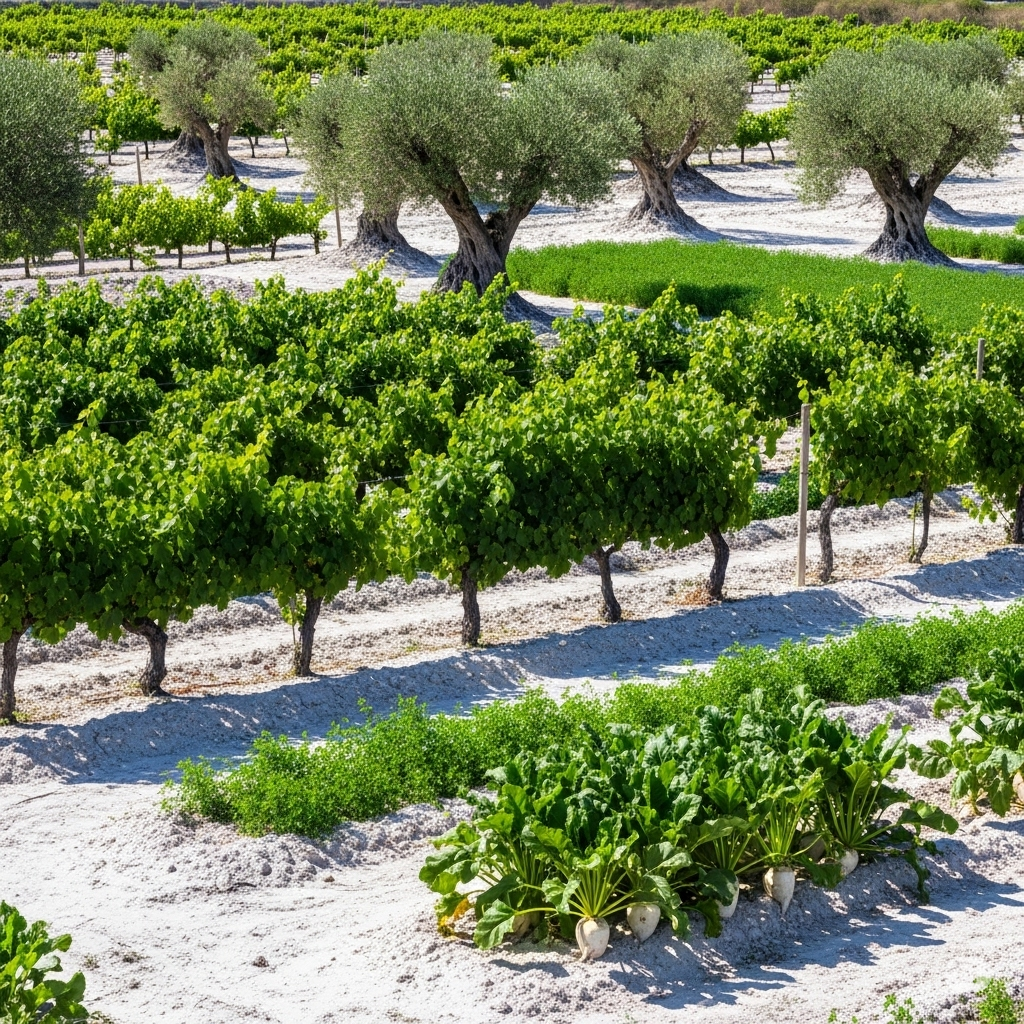
Strategic Fertilization
It’s important to apply fertilizers that account for the lower availability of certain nutrients. This may include using foliar fertilizers for micronutrients like iron, or localized application of phosphate fertilizers to minimize fixation by calcium.
Use of Acidic Amendments (with caution)
In some cases, amendments that tend to slightly acidify the soil around the root zone can be used, such as elemental sulfur or iron sulfate. However, it’s crucial to apply these amendments carefully and based on soil analysis, as excessive pH reduction can have negative effects.
Organic Matter Management
Adding organic matter can help improve soil structure, increase the availability of some micronutrients by forming chelates, and enhance moisture retention.
Adequate Irrigation
Proper irrigation management is important to prevent salt accumulation and ensure a constant supply of water for plants.
Conclusion: Harnessing the Potential of Calcareous Soils
Calcareous soils, with their distinctive composition and properties, present both unique challenges and opportunities for agriculture. While alkaline pH and the potential low availability of certain nutrients require special attention, many valuable crops can thrive in these soils with informed and adapted management. Understanding the characteristics of calcareous soils allows farmers to implement effective strategies to optimize their productivity and harness their agricultural potential.
Have you ever cultivated in calcareous soils? What adaptations have you made? Share your experiences in the comments!
 AgronoBlog – Agriculture Blog
AgronoBlog – Agriculture Blog 


